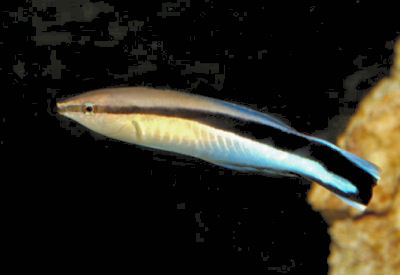
by Richard Peacock
How Computers Compute
Unless you are some sort of psychic vampire currently reading my mind, you are enjoying this article on a computer. And if you are a psychic vampire, taste a little of this-- ha ha! That's right! I'm thinking about giving Henry Kissinger a sensual massage and there's nothing you can do about it!
But for the rest of you, you may be wondering just how it is that computers work. How does a chip made of plastic, metal, and ectoplasm perform mathematical operations and connect you to single women looking for a good time?
My silly old grandfather used to tell me that "fairies" used "magic" to construct computer chips. But, of course, every child must eventually grow up one day. So, as I got older and wiser, I began to wonder just how exactly did the fairies create electronics, and why did most of the world's fairies seem to live in Japan and Korea?
Computer chips (or "fairy squares") are composed of thousands, millions, billions, or even tens of transistors, all shrunk down to microscopic sizes using alien technology which the fairies acquired during their long struggle for independence/the right to own slaves. In fact, the first computer chips weren't chips at all, but large circuits made of several integrated transistors. It wasn't until the transistors became fruitful and multiplied did computers become truly powerful.
So what's the big freakin' deal with transistors?! Okay... first of all... calm down. Good. You see, Japanese engineers (ie, fairies in their larval stage) construct "logic gates" out of transistors, which let a chip send electricity down one pin or the other, based on some condition. If you string together logic gates in particular ways, you can create circuits to perform mathematical operations, which are at the heart of everything that happens in your computer; from doing taxes, to playing video games, to looking up amputee porn, it all boils down to chips in your computer doing math.
So what's next for computers? Some say quantum computing. Others say some kind of hamster-running-on-a-wheel based processor. But I believe the most likely course is that computers will remain exactly the same, both in power and in price, while fairies turn their attention to improving their newest invention: fleshlights.
Science Rocks is written by Richard Peacock, inventor of the communication satellite. He now lives in Sri Lanka where he ponders the riddles of this, and other worlds. Email him at richard@amateurscientist.org.
Friday, October 31, 2008
How Computers Compute
Tuesday, September 9, 2008
Get to Know a Hominid: Part 2 - Paranthropus boisei

by Richard Peacock
Welcome to Part 2 of my thrilling Science Rocks series, Get to Know a Hominid. A few weeks ago you may have been thrilled and/or aroused by my coverage of Homo habilis. But for this week, we shall peek a little earlier in time at Paranthropus boisei (pronounced "boy-see-aye"), which is known to biologists as our grumpiest ancestor, as the following recreation demonstrates:
P. boisei lived mostly in woodland areas, rather than the jungles and dangerous "low-income" apartment buildings inhabited by his less civilized progenitors of genus Australopithecus. Because of his abnormally large flat teeth, it was long believed that P. boisei's diet consisted mostly of roots and nuts, earning him the nickname "Nutcracker Man." But we now know that he actually earned this nickname due to his sterling performance in the Russian ballet classic, The Nutcracker, in the role of the Sugar Plum Fairy. This is why some modern paleontologists refer to P. boisei as "sugar tits."
This ancestor to modern humans lived around two million years ago, and was sexually dimorphic. No, that doesn't mean he swung both ways. Lacking a tail, it would have been difficult to swing through trees while maintaining proper balance. Instead, sexual dimorphism refers to the fact that the males were larger than the females. Also, they were bisexual.
It was once believed that P. boisei was the first hominid to use stone tools. But modern research shows that P. boisei was simply the wacky neighbor of Australopithecus robustus, and as such was always borrowing his tools and never giving them back. He was also known to pop in on A. robustus unexpectedly and at inopportune times, often uttering his well-worn catch phase: "Sorry neighbor! My cranial capacity is only 89% that of H. habilis!"
Though he may have been annoying and his evolutionary line just sort of petered-out, we should never forget our friend and colleague, P. boisei.
Extra insight
Science Rocks is written by Richard Peacock, inventor of the communication satellite. He now lives in Sri Lanka where he ponders the riddles of this, and other worlds. Email him at richard@amateurscientist.org.
Thursday, August 28, 2008
Fishy Love

by Richard Peacock
Sex change. Admit it, we've all thought about it: what would it be like to have our genitals surgically mutilated and sewn back together in the approximation of another gender's? Maybe we even have friends or family members who have gone through the expensive and painful surgery. But, unlike my uncle Samuel (or as she's now known, Samuelie), there are some species of coral reef fish which can change sex spontaneously, and without the disfiguring scars that alert guys you meet on the Internet to your recent past as a man.
You see, dear reader, Mother Nature is one freaky bitch. She wants her animals to get it on all the time, regardless of what's dangling between their ventral fins. To satisfy her unnatural cravings, she has come up with some pretty clever techniques to thwart God's laws of decency.

Take the cleaner wrasse for example. This fish typically lives in small groups of one male and several females, known as a harem (seriously). If the male dies or is otherwise removed from the group, the largest female will spontaneously change sex, become larger, change colors, and start shaving.
This happens because the presence of the male was actually suppressing the natural inclination of the females to change sex. Let me repeat that: the females want to change sex, and if removed from the presence of a male, they will.

But what about in the case of my aunt Samuelie, where a male animal becomes female? The most famous example of this is the friendly clownfish. You may remember him as the dad, Marlin, in the movie Finding Nemo. In the movie, Marlin's wife is killed, along with most of their eggs. He is then left to raise the one surviving egg, Nemo, all alone.
But if the plot of Finding Nemo happened in real life, Nemo's dad would have simply changed sex and started catting around with the other bachelor clown fish, leaving little Nemo to raise himself. Who's going to teach him about girls? Who's going to play catch with him using a pearl as a baseball? No one, that's who. No one.
But Mother Nature doesn't care about Nemo. And she doesn't care about the standards of decency that all civilized people agree upon. She only wants to you have crazy, absurd sex all the time, around the clock. And so do I.
Further Insight: Physiology of Sex-Change in Reef Fish
Science Rocks is written by Richard Peacock, inventor of the communication satellite. He now lives in Sri Lanka where he ponders the riddles of this, and other worlds. Email him at richard@amateurscientist.org.
Friday, August 22, 2008
Get to Know a Hominid: Part 1 - Homo habilis
Get to Know a Hominid - Part I - Homo habilis
Whether you believe that man evolved from apes, or that the giant flying ape god Bananas deposited humans on this planet nearly 300 years ago, there's no denying that Homo habilis was our coolest hominid ancestor.

H. habilis lived around 2 million years ago in what is now East Africa. He was shorter than us, had disproportionately long arms, and probably couldn't grasp our sophisticated sense of humor. In short, dear reader, he was a dumb-dumb. Or at least, he would certainly be classified as such by our standards, seeing that his brain was only half the size of ours.
And yet, H. habilis was the first hominid to make and use stone tools, hence his Latin name, "Handy Man," and his college nickname, "The Dudestir." But even though The Dudestir could make crude stone weapons (mostly out of flint stone... hey... The Flintstones... I just got it!), he was by no means a master hunter, and instead used his tools for scavenging and making crafts to sell at county fairs.
It has long been believed that H. habilis is a direct ancestor of H. erectus, which in turn is a direct ancestor of us. But findings in 2007 suggested that H. erectus instead shares a common link with H. habilis, and there is not a direct lineage. In fact, the two species co-existed for a time, and might have even fucked!*
Homo habilis may have been an ape-like dumb-dumb, but he was our ape-like dumb-dumb. So the next time you are at the zoo, and you happen to wander past the ape exhibit, don't just throw rocks and laugh. Instead, remember that our link with these gentle creatures is far stronger than you may have previously thought. Then throw the rocks. Science rocks.
Further insight: Wikipedia
*(But probably not)
Science Rocks is written by Richard Peacock, inventor of the communication satellite. He now lives in Sri Lanka where he ponders the riddles of this, and other worlds. Email him at richard@amateurscientist.org.


